Maine Fall Weekend in Bar Harbor & Acadia National Park
When the temperatures cool down and the foliage color heats up, there’s no better place for a Maine autumn getaway than Bar Harbor and Acadia National Park.
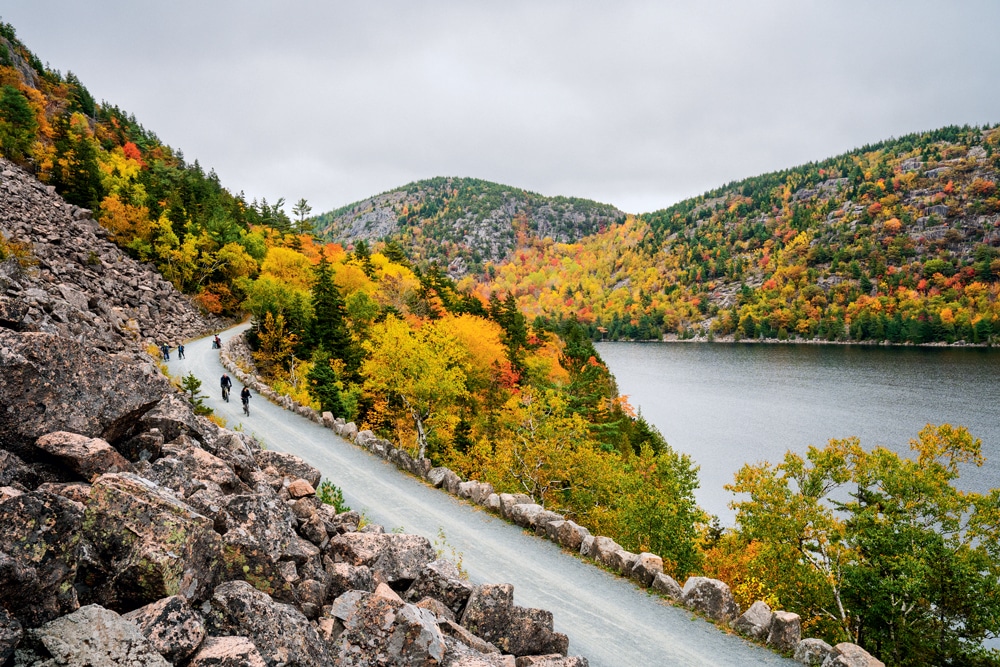
Bikers cruise down a carriage road alongside Acadia National Park’s glacier-carved Jordan Pond.
Photo Credit : Tara Rice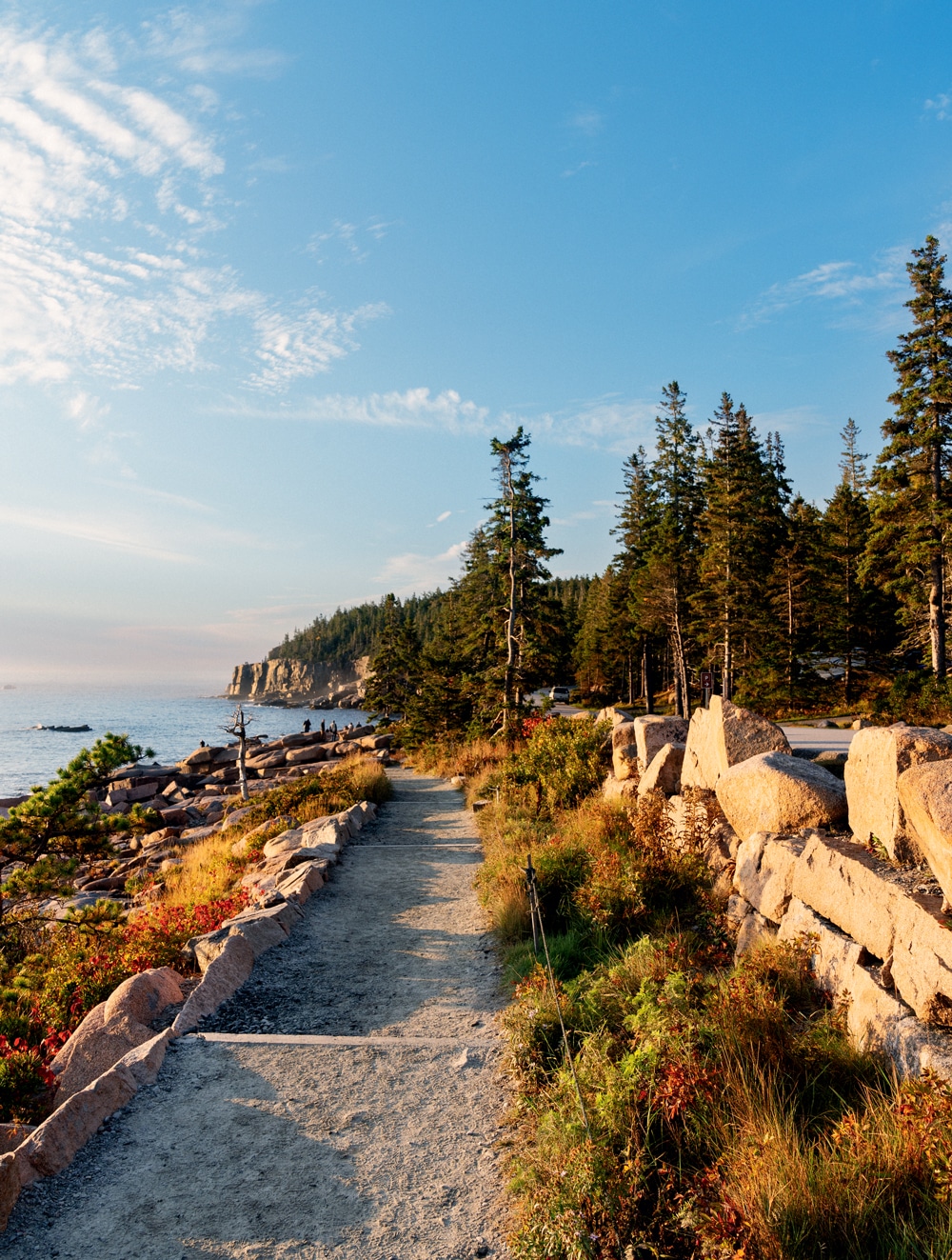
Photo Credit : Tara Rice
No matter how often I drive, pedal, or hike the Ocean Drive stretch of Park Loop Road in Acadia National Park, it’s never the same. Tides ebb and flow, sunlight dances with shadows, waves whisper or roar. Sometimes Thunder Hole lives up to its name; other times, as a ranger quipped, “it’s a gurgling gulch.” Sun, rain, fog, and even snow add their quirks and splendors, as do the seasons. But during autumn, nature pulls out all the stops in its zeal to impress. Mountains dressed in seasonal couture plunge to rugged granite shores and rim freshwater lakes, their reflections rippling in the waters. Add the softer light and sweater-weather temperatures, and it’s hard to beat autumn in Acadia.

Photo Credit : Tara Rice
Acadia is both a natural wonder and a cultural one with constructed treasures, such as the Park Loop, carriage roads, Jordan Pond House, and stair trails. Unlike most other national parks, it was created from private lands, assembled piece by piece from donations by wealthy summer rusticators as well as locals of modest means. Its porous, hodgepodge boundaries nudge backyards and downtowns. The town of Bar Harbor’s history is woven into these boundaries. Staying here underscores and eases the transition between town and park, then and now, human ingenuity and nature’s grandeur.

Photo Credit : Tara Rice
I love strolling along the harbor-hugging Shore Path in the predawn stillness before Bar Harbor’s waterfront emerges from its overnight hibernation. I might linger by the town pier to watch the sun peek over the horizon, radiate across the water and Porcupine Islands, illuminate the schooner Margaret Todd’sfour masts, and turn a pebbly beach into shimmery starbursts.
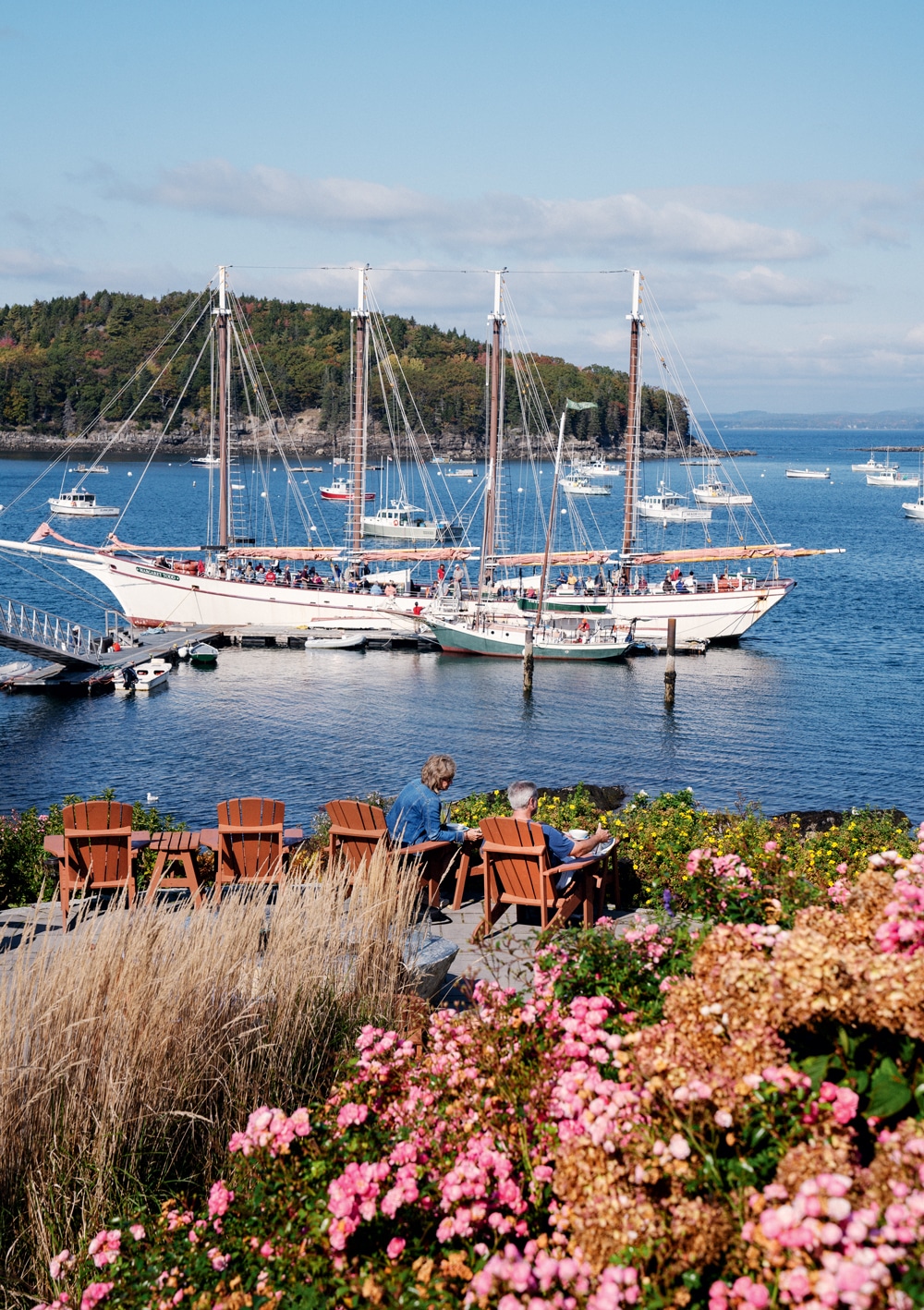
Photo Credit : Tara Rice
If the tide cooperates, I’ll cross the namesake sandbar tethering Bar Harbor to Bar Island and hike into Acadia, climbing gently through gold-and-orange-speckled hardwoods preening amid the spruce on the Bar Island Trail. The high point reveals the town backed by Champlain and Dorr mountains. The return frames Millionaire’s Row, as the grand “cottages” fronting the shoreline were called during Bar Harbor’s Gilded Age.

Photo Credit : Tara Rice
The Bar Harbor Historical Society’s 41-room La Rochelle Mansion and Museum fills one of those cottages. Stepping inside peels away the centuries, as its furnishings and exhibits tell the town’s side of Acadia’s story: the Wabanaki and European explorers, artists and rusticators, farmers and fishermen, the wealthy summer elite and the island folk who answered their needs. Images recall the Great Fire of 1947, which put the final punctuation on Bar Harbor’s Gilded Age.

Photo Credit : Tara Rice
By walking or pedaling rather than driving, I better engage with both town and park: I discern pebble beaches from cobblestone ones along the granite shores; perhaps spy an eagle or hawk soaring overhead or hear a red squirrel’s nattering. I can pedal from town to Acadia’s carriage road circling Witch Hole Pond, where flamboyant maples, birches, and oaks frame the turreted, triple-arched Duck Brook Bridge.
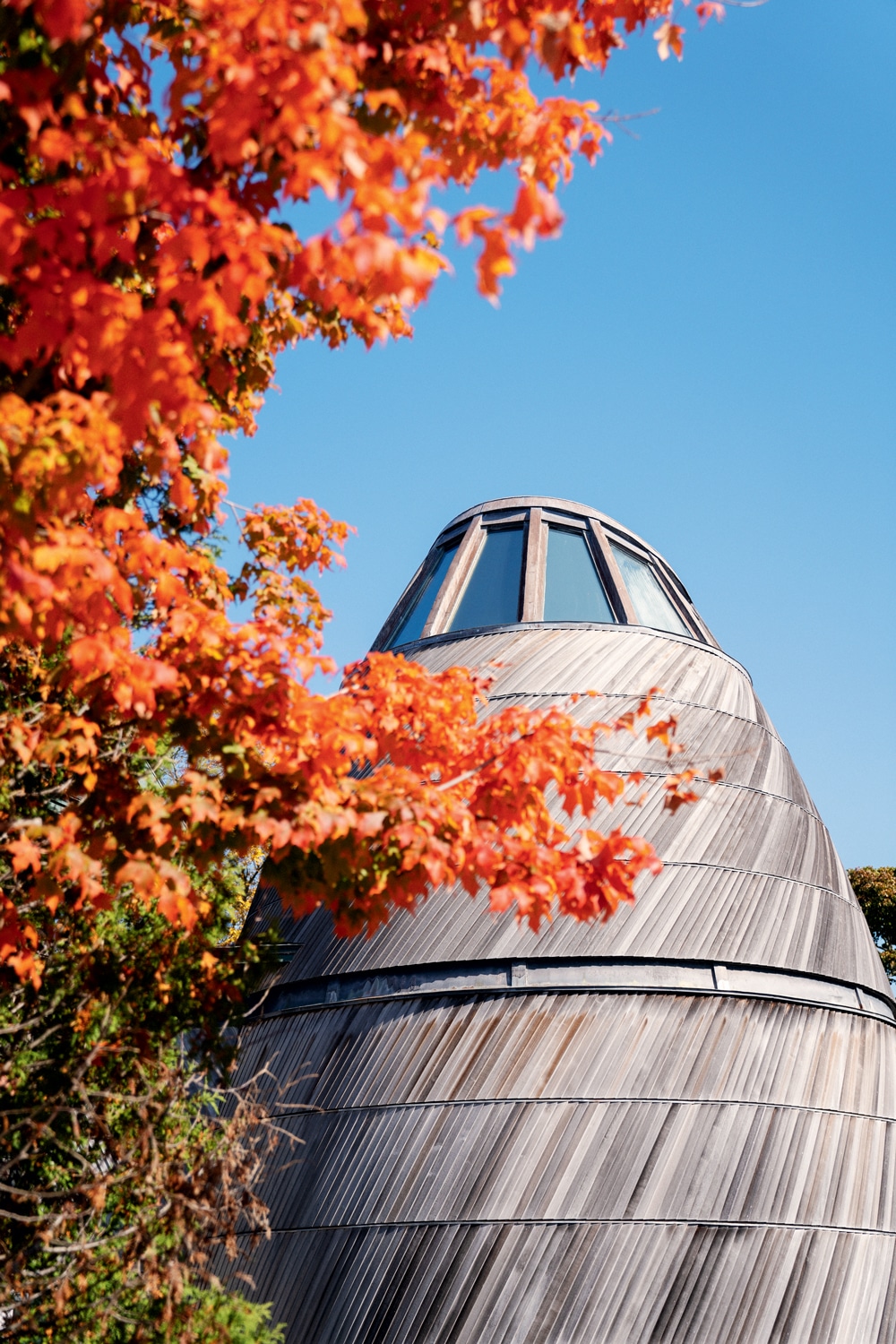
Photo Credit : Tara Rice
One day I walked into history when I came upon Compass Harbor, a wooded, vest-pocket shorefront park parcel about a mile from downtown. George Dorr, who devoted most of his life and fortune to founding and growing Acadia National Park, lived here. He also contributed his name and left footprints at Sieur de Monts Spring, a gentle walk from downtown via the Great Meadow Trail and Jesup Path. I can spend the better part of the day in this woodland oasis shadowed under the face of Dorr Mountain. Human-made treasures here include a nature center, the Wild Gardens of Acadia, the original Abbe Museum, an ornate springhouse, and inviting stair trails zigzagging Dorr Mountain’s face.
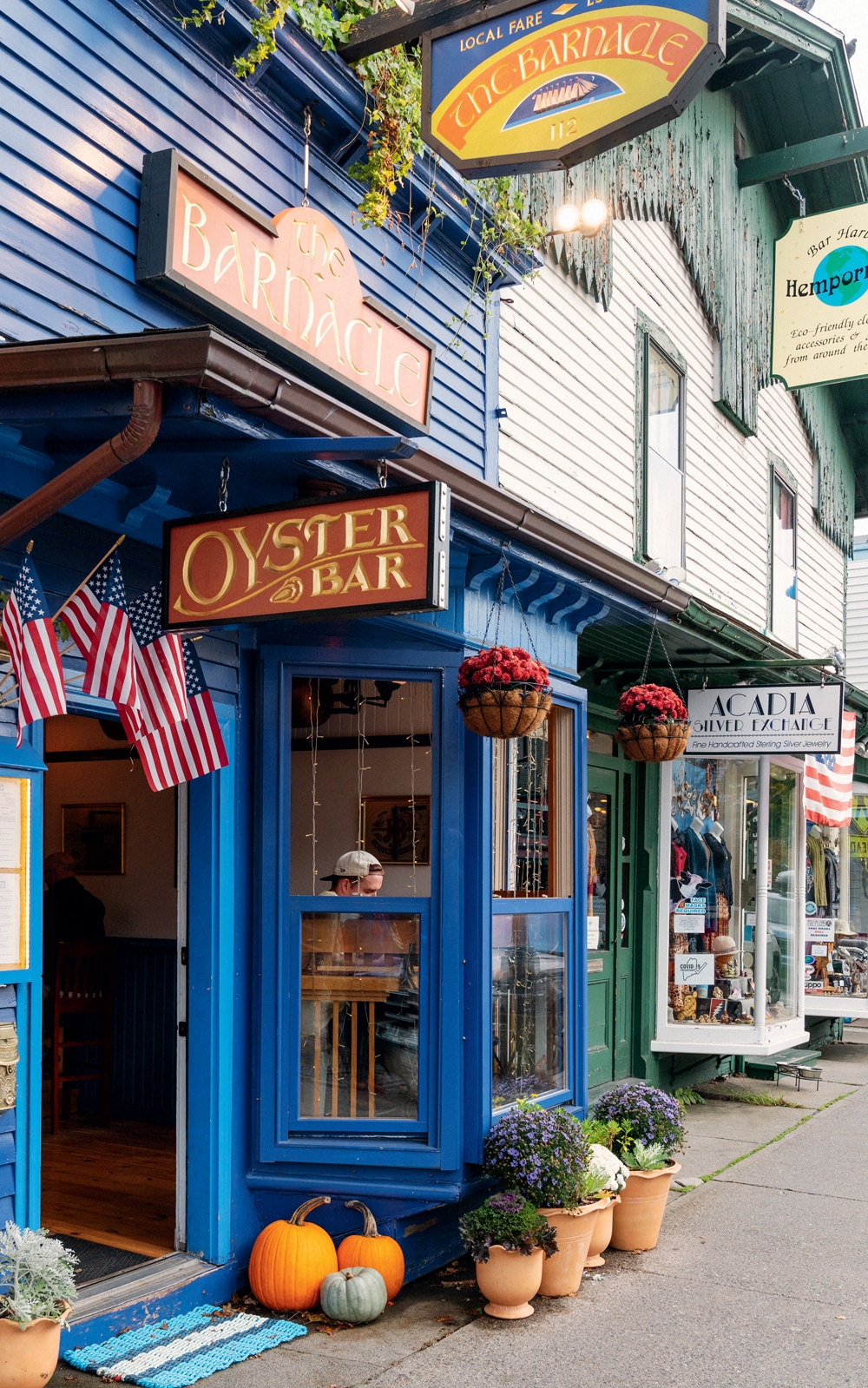
Photo Credit : Tara Rice
Those trails, works of art built by the Civilian Conservation Corps in the 1930s, flow with the mountain, easing the way with granite steps and natural balconies. On a brilliant autumn day, there’s no finer place to pause—gazing over color-splashed woods, craggy coast, and ocean waters—and appreciate human ingenuity in service of nature’s grandeur.


